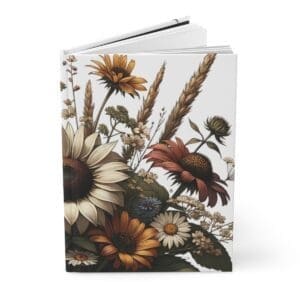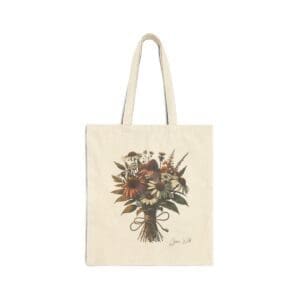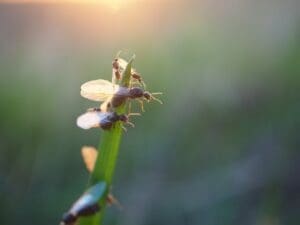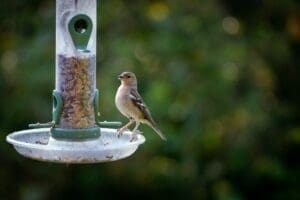Congratulations on your new build home! It’s always an exciting journey to start turning a house into a home, especially when it comes to the garden!.
You might be looking at an empty plot right now, but with some careful planning and a dash of elbow grease, you can transform it into a veritable oasis for our wonderful UK wildlife.
This blog post will guide you through each step of the way. Ready? Let’s get started!
This post contains affiliate links which means we may make commission from any qualifying sales with no extra cost to yourself.
Typical Issues with New Build Gardens
Like any new beginning, new build gardens often come with their own set of challenges. You might be dealing with compacted, nutrient-poor soil, a lack of established plants and trees, limited space, or even the occasional unwanted pest. But don’t worry – these challenges can be overcome with the right approach and a bit of patience. With a few smart strategies, such as improving soil quality, incorporating mature plants, making use of vertical space, and ensuring a balanced ecosystem, your garden will be off to a great start.
Determining Your Garden Layout
Taking the first steps in creating your wildlife-friendly garden involves careful consideration of your current space. Here are some crucial aspects to consider:
The Garden's Aspect
Which way does your garden face? This will significantly affect the sunlight your garden receives. South-facing gardens usually get more sun and are ideal for a variety of sun-loving plants and flowers. North-facing gardens may have more shaded areas, perfect for shade-loving species such as ferns and some species of wildflowers.
Sunlight and Shade
Take note of which areas of your garden receive the most sunlight and which are in the shade. Some wildlife-friendly plants require full sun, while others do best in partial or full shade. Understanding the sun’s path across your garden can inform where you place different plants and wildlife-friendly features.
Patio Placement
The placement of your patio is another aspect to consider. It’s often nice to have a seating area close to the house for convenience, but perhaps there’s a sunny spot in the corner of the garden that would make an idyllic spot for a small table and chairs.
Privacy and Overlooking Properties
New build homes often sit quite close to their neighbours, which can lead to issues with overlooking properties. Consider how you can create privacy in your garden. This could involve strategically planting taller trees or installing a pergola and growing climbing plants up them such as clematis or honeysuckle. Not only will these measures give you privacy, but they also provide habitats and food sources for wildlife.
Lawn and Play Areas
If you have children or pets, you may want to incorporate a lawn or play area. Even then, consider letting parts of your lawn grow a bit wild. Longer grass can provide a home for a variety of insects, contributing to your garden’s overall biodiversity.
Determining your garden’s layout is the foundation for creating your wildlife-friendly space. By understanding your garden’s unique attributes and potential, you can make informed decisions that enhance its appeal, function, and biodiversity. Remember, your garden is an extension of your home, an outdoor space for you to enjoy while also supporting local wildlife.
Incorporating Wildlife-Friendly Features
Creating a wildlife-friendly garden involves more than just a smattering of plants; it’s about cultivating a complete habitat that caters to the needs of wildlife. Here’s how to do it:
Food Sources
A wildlife-friendly garden should be a buffet for various creatures. Consider installing bird feeders filled with seeds and fat balls for feathered friends. When it comes to plants, select a mix that provides pollen and nectar for bees and butterflies, and berries or seeds for birds. Plants like lavender, buddleia, and foxgloves are great for pollinators, while holly and rowan trees offer berries for birds in the winter.
Water Sources
Water is an essential feature of any wildlife garden. A pond, even a small one, can attract a myriad of creatures, from dragonflies to frogs. If a pond isn’t feasible, even a bird bath or a shallow dish of water can be a vital hydration spot for birds and insects. Remember to keep the water fresh and clean, and if you have a pond, make sure there’s a way for creatures to climb out if they fall in.
Shelter and Nesting Areas
Wildlife needs places to shelter from the elements and predators, and safe spots to rear their young. Planting a mix of trees and shrubs can provide excellent cover and potential nesting spots for birds. Insect hotels are fantastic for beneficial insects like bees and ladybirds. Hedgehogs and other small mammals will appreciate piles of leaves or logs where they can hide and hibernate. By providing these features, your garden becomes a safe haven for various species.
Access Points
Ensure that creatures can get in and out of your garden easily. Small mammals like hedgehogs roam through multiple gardens in search of food, so a small hole in the bottom of a fence can be a significant highway for them. Birds need clear flight paths to bird tables and nest boxes, so consider their approach when positioning these features.
Native Plants
Incorporating native plants in your garden is beneficial for local wildlife, as these plants and animals have evolved together over thousands of years. Native plants, such as primroses, bluebells, and honeysuckle, are designed to thrive in our UK climate and are often more resistant to pests and diseases. They also tend to be the most beneficial for native insects and birds.
Each of these features will contribute to the overall wildlife-friendliness of your garden, but remember that the most important thing is to provide a variety of habitats within your space. Diversity is key in attracting and supporting a wide range of wildlife. The more variety you have, the more fascinating creatures you’ll find in your garden.
Maintaining and Nurturing Your Garden
A garden is a living, breathing thing and it needs care to flourish. Regular watering, appropriate pruning, and replenishing bird and insect feeders will keep your garden thriving.
Try to garden organically, avoiding pesticides that could harm wildlife. Let some areas grow a little wild, as perfectly manicured lawns aren’t as wildlife-friendly.
And remember to take the time to simply enjoy your garden. Watch the birds, listen to the hum of the bees, and celebrate each new creature that comes to visit.
Final thoughts
Creating a wildlife-friendly garden is one of the most rewarding things you can do with your outdoor space. Not only will you have a beautiful garden to enjoy, but you’ll also be supporting the local ecosystem. It’s a bit of work, but the rewards are well worth it. So put on your gardening gloves, get out there, and start creating your own wildlife haven. Happy gardening!
Frequently Asked Questions
Q. What type of plants should I use in a wildlife-friendly garden?
Choose a variety of native plants, as they’re most likely to attract local wildlife. Aim for a mix of trees, shrubs, and flowers to provide different types of habitat and food sources. Plants that provide nectar, berries, or seeds are especially beneficial.
Q. How can I provide water for wildlife in my garden?
The best way to provide water is to install a pond, as it can support a wide range of creatures from insects to amphibians. If this isn’t possible, even a small bird bath, or a shallow dish of water, can be very helpful to birds and small mammals.
Q. I don’t have much space. Can I still create a wildlife-friendly garden?
Absolutely! Even a small garden or balcony can be made wildlife-friendly. Pot plants can attract pollinators, bird feeders can provide food for birds, and a small dish of water can be a lifesaver for small creatures.
Q. How can I attract birds to my garden?
Provide a variety of food sources, like bird feeders filled with seeds and fat balls. Also, install bird boxes for nesting and ensure there are trees or shrubs for cover. A water source is also essential.
Q. Is a lawn necessary in a wildlife-friendly garden?
Not necessarily, but a lawn can provide space for different activities. If you do keep a lawn, consider leaving parts of it to grow longer, which can be beneficial for insects and small mammals.
Q. Can I use pesticides in a wildlife-friendly garden?
It’s best to avoid synthetic pesticides in a wildlife-friendly garden. These can harm beneficial insects and disrupt the ecosystem. If you’re having issues with pests, consider organic alternatives or use methods like companion planting to deter pests.
Remember, every small action you take can make a big difference to the wildlife in your garden. Happy gardening!







